Nationality American Name Joan Semmel | ||
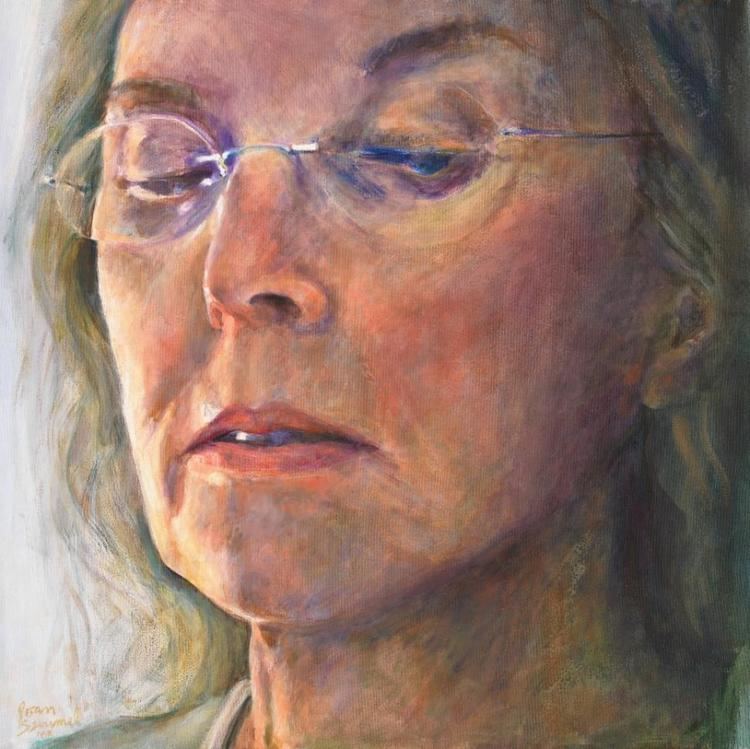 | ||
Movement Figurative art, Feminist Art | ||
Joan semmel a passion for painting
Joan Semmel (born October 19, 1932, New York City) is an American feminist painter, professor, and writer. She is best known for painting large scale, realistic nudes of her own body as seen from her perspective looking down.
Contents
- Joan semmel a passion for painting
- Joan semmel interview
- Education and Political Involvement
- Work
- First Erotic Series 1970 71
- Second Erotic Series 1972 73
- Self Portraits
- Echoing Images 1979 81
- Beach series 1985 1986
- Locker Room series late 1980s
- Mannequins 1996 2001
- With Camera 2001 2006
- Ongoing
- Exhibitions
- Museum Collections
- Recognition
- References
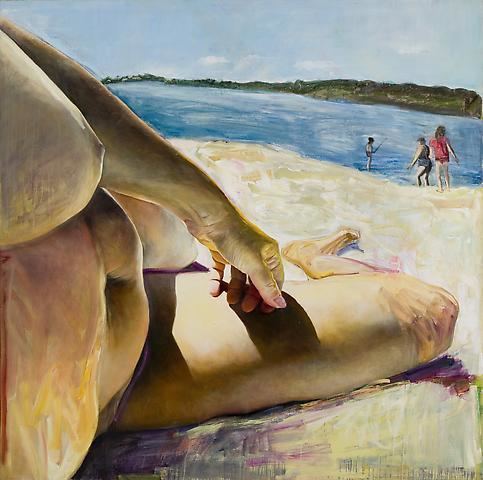
Joan semmel interview
Education and Political Involvement
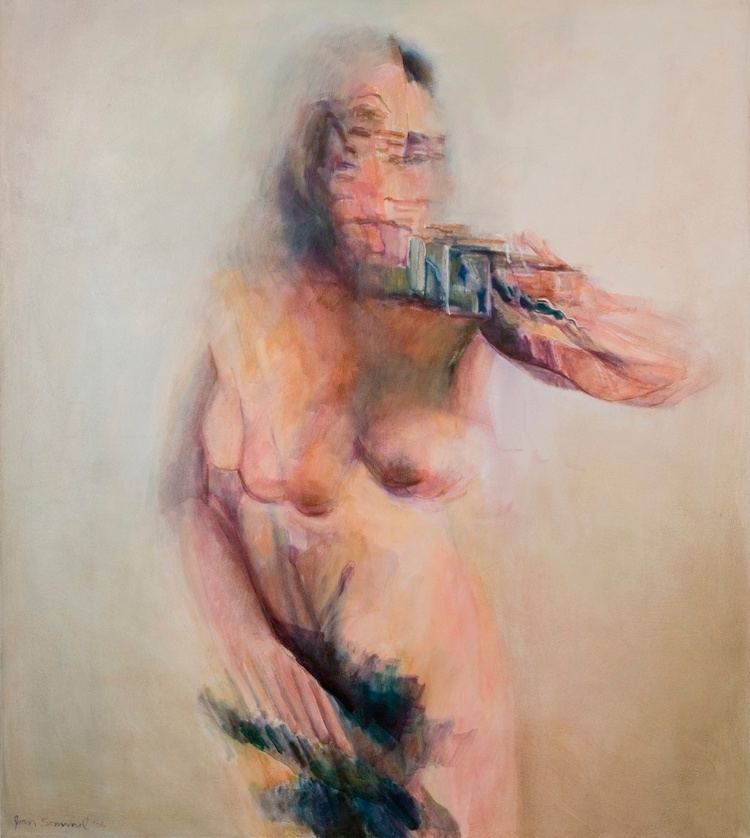
Semmel began her artistic training at Cooper Union, where she studied under Nicholas Marsicano. She went on to study with Morris Kantor at the Art Students League of New York before earning a BFA from the Pratt Institute in 1963.
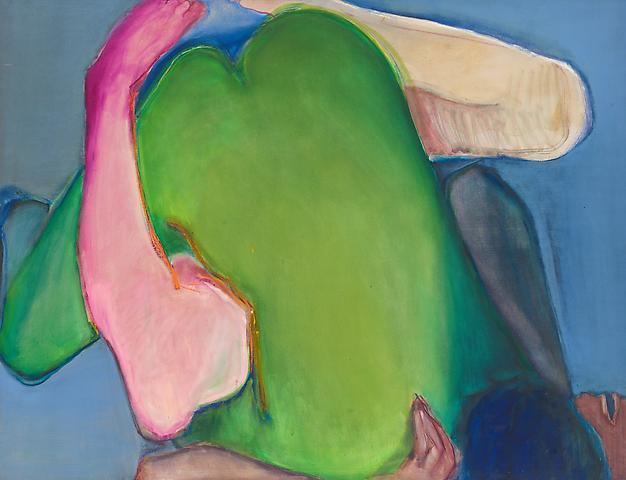
She spent seven and a half years in Spain (1963-1970), where her work "gradually developed from broad gestural and spatially referenced painting to compositions of a somewhat surreal figure/ground composition...(her) highly saturated brilliant color separated (her) paintings from the leading Spanish artists whose work was darker, grayer and Goyaesque." Semmel returned to New York City in 1970 and earned an MFA from the Pratt Institute in 1972. Upon returning to New York in 1970, Semmel was shocked by the number of sexualized images of women she saw on American newsstands. She began to paint in a figurative style, and incorporated the erotic themes for which she is known today. Her MFA thesis show at Pratt consisted of paintings from the First Erotic Series.
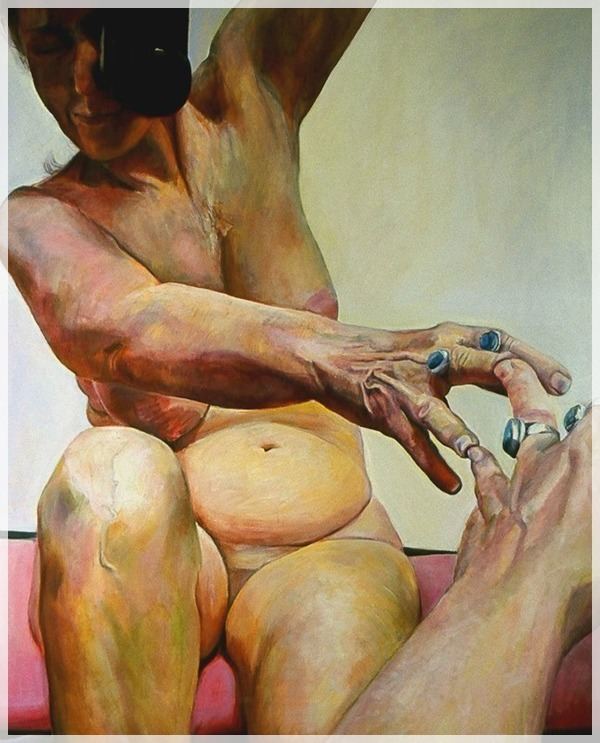
In New York, Semmel became involved in the feminist movement and feminist art groups devoted to gender equality in the art world. She has been a member of the Ad Hoc Committee of Women Artists, the Fight Censorship (FC) group, Women in the Arts (WIA), and the Art Workers Coalition (AWC). The Women's Caucus for Art honored Semmel as a 2013 recipient of the organization's Lifetime Achievement Award.
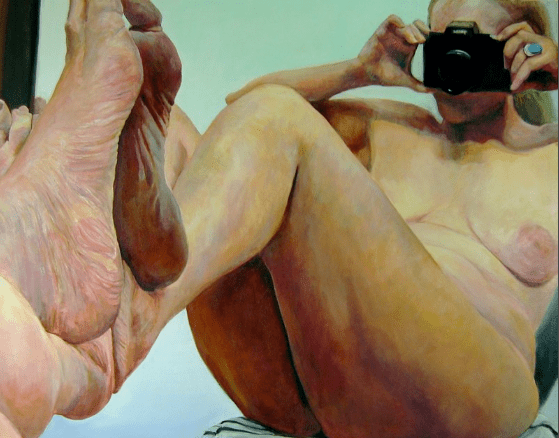
Semmel has taught at the Brooklyn Museum of Art and the Maryland Institute College of Art. As of 2013, she is Professor Emeritus of Painting at Rutgers University. In 2000 Semmel taught at International Summer Academy of Fine Arts in Salzburg, Austria.
Work
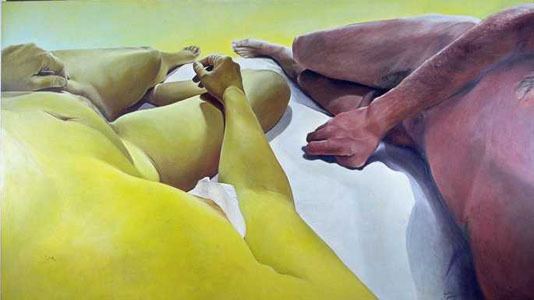
About major themes in her work, Semmel states, "While my work developed through series, the connecting thread across decades is a single perspective: being inside the experience of femaleness and taking possession of it culturally." Though Semmel has created many different series throuhout her career, the majority of her oeuvre features themes of sexuality, the body, intimacy and self exploration both physically and psychologically.
First Erotic Series (1970-71)
The First Erotic Series depicts heterosexual couples having sex. The subject matter is explicitly erotic, but the compositions give a nod to abstraction with expressive, unnatural colors and a strong emphasis on individual forms. These large scale depictions of sexual activities reclaimed gaze of the female nude, which heralded an unprecedented approach to painting and representation in the 1970s.
Second Erotic Series (1972-73)
Referred to by Semmel as "fuck paintings," the Second Erotic Series paintings are sharp and realistic but retain the intense, unnatural colors of the First Erotic Series. The paintings are based on photographs of a man and woman having sex, which Semmel took over several sessions with the couple's consent. When no commercial gallery in New York would show the series, Semmel rented space in SoHo and exhibited the work herself, attracting attention from critics. Semmel refused requests by Penthouse and Playboy to publish work from the series. Erotic Yellow (1973) was used without her permission in the “Hot Erotic Art” issue of Screw magazine (May 1974).
Self Portraits
During the summer of 1973, while teaching at the Maryland Art Institute in Baltimore, Semmel began painting what she calls “the idea of myself as I experience myself, my own view of myself.” The self portraits such as Me Without Mirrors (1974) include the artist's body from about the collar bone to the feet and do not include her face. Source photographs for the large-scale paintings were taken by the artist, or in some cases by a friend “as close as possible to the artist’s viewpoint.” Several self-portraits such as Intimacy and Autonomy (1974) include a male partner. In these paintings, “the nude no longer appears as an idealized fantasy, allegorical figure, or landscape of desire but rather as the self-apprehended body of a specific woman.”
Echoing Images (1979-81)
Semmel describes this series, which was exhibited at Lerner Heller Gallery: "the main compositional figure is repeated twice: once in realist style and a second much larger highly expressionistic version. They are almost like internal and external views of the self that combine a perceptual image with the ambition and striving of the emotive ego."
Beach series (1985-1986)
Series of paintings made in Semmel's East Hampton studio. In 1987 she bought a house in Springs, East Hampton, where she continues to work every summer.
Locker Room series (late 1980s)
Beginning with Mirror Mirror (1988), Semmel depicts camera as a "device to frame and question issues of perception and representation." Semmel took photographs in women's locker rooms, using the mirror and the camera "as strategies to destabilize the point of view (who is looking at whom) and to engage the viewer as participant...my paintings revealed a body at a more advanced age, and showed me aggressively pointing the camera at the viewer."
Mannequins (1996-2001)
Inspired by old mannequins she found on the street, Semmel worked with these "idealized versions of the female body...as alter egos to explore the isolation and anomie of objectification and fetishization. The haunting beautiful faces, broken parts and empty armholes were eloquent witnesses to the way women were valued for their youth and beauty and discarded in later years as powerless and no longer viable."
With Camera (2001-2006)
The first time Semmel purposefully poses in front of a mirror with the camera.
Ongoing
Semmel has continued to paint nude self-portraits in the 2000s and 2010s. These self-portraits employ a different perspective, one seen in a mirror and including the camera and the reflection of its flash. Her most recent work explores the physical and psychological experiences associated with aging, while continuing to be self-referential and engaging in her paintings. These meditations on the aging female physique are experimental in representation, expanding beyond conventional realism. Her self portraits are doubled, in motion and fragmented, perhaps explorations of a metaphysical state of being and a close tie between the body and the mind. Challenging the patriarchal gaze of an objectified nude female body, Semmel's work dissolves the typically clearly demarcated lines between artist and model, viewer and subject
Exhibitions
Museum Collections
Semmel's works are found in museum collections including: the Museum of Fine Arts, Houston; the Blanton Museum of Art, Austin, TX; Orange County Museum of Art, CA; Chrysler Museum of Art, Norfolk, VA; National Museum of Women in the Arts, Washington, DC; The Parrish Art Museum, Southampton, NY; the Joslyn Art Museum, Omaha, NE; the Jewish Museum (Manhattan), New York; and the Brooklyn Museum, New York.
Recognition
Semmel's awards include the Women’s Caucus for Art Lifetime Achievement Award (2013), the Anonymous Was A Woman Award (2007), National Academician of the National Academy Museum, New York (2014), the Richard Florsheim Art Fund Grant (1996), Distinguished Alumnus Award, Cooper Union (1985), Yaddo Residency (1980), Macdowell Colony Residency (1977), and National Endowment for the Arts grants (1980, 1985).
